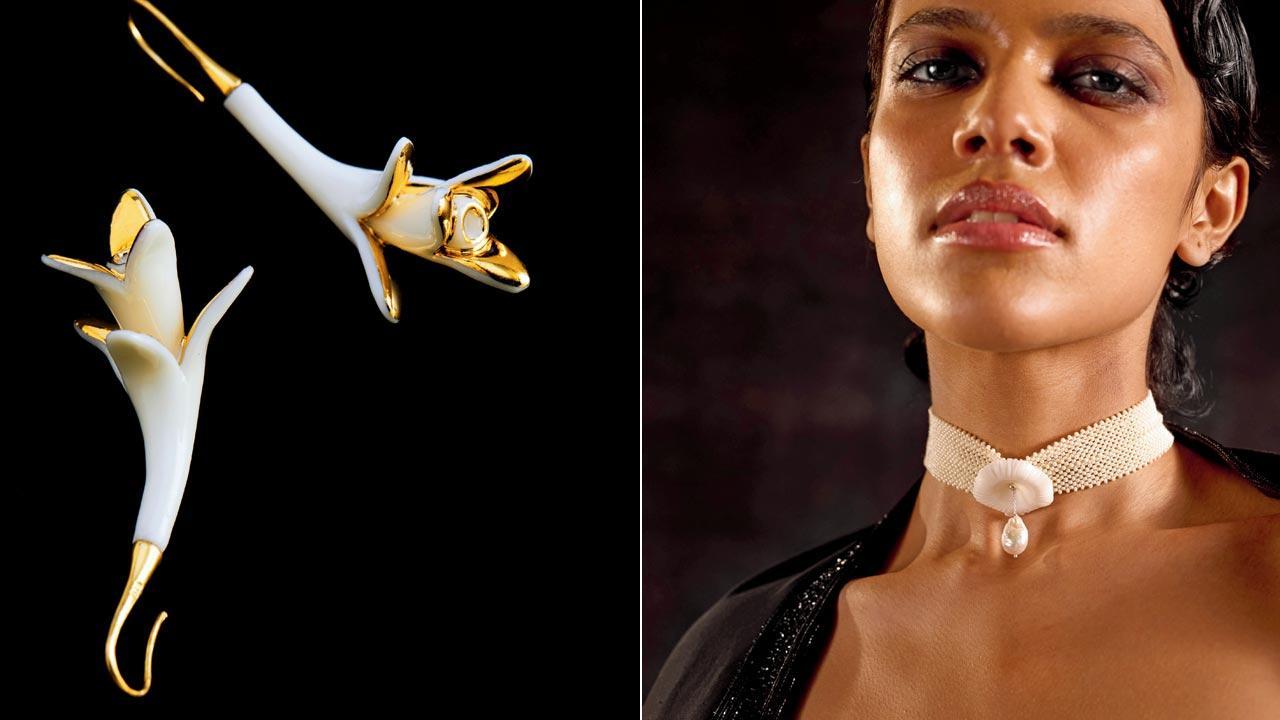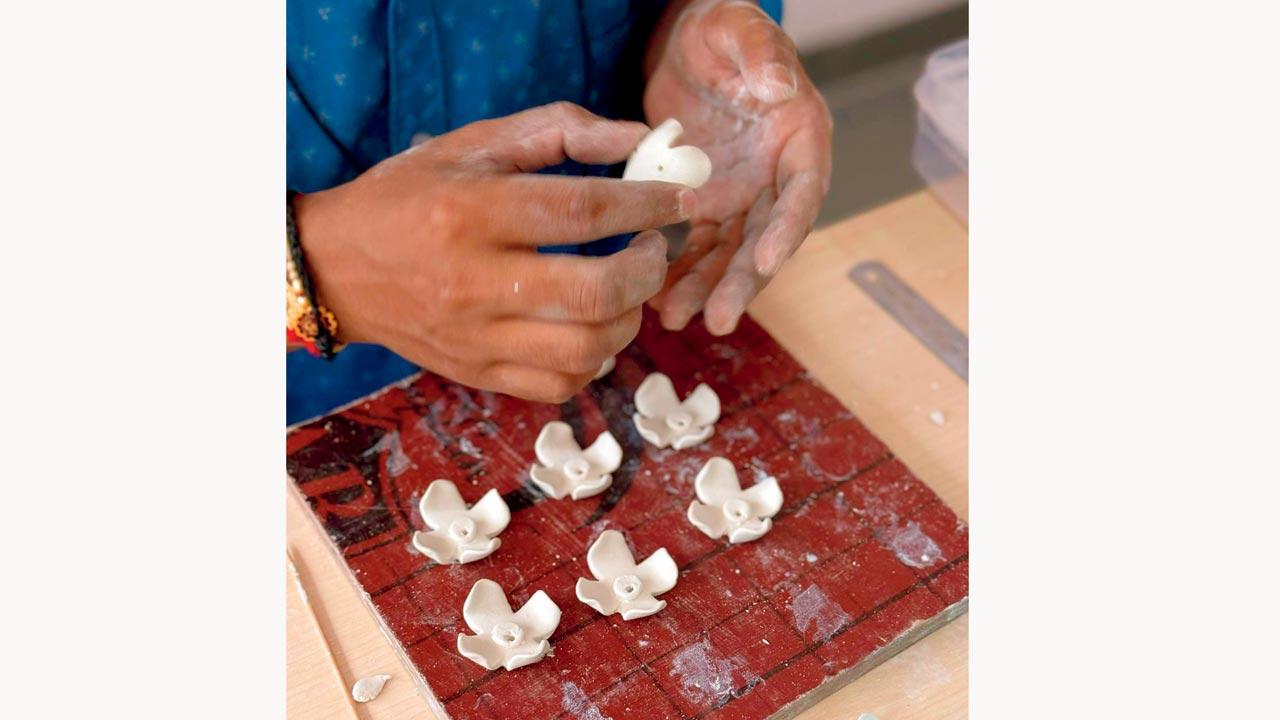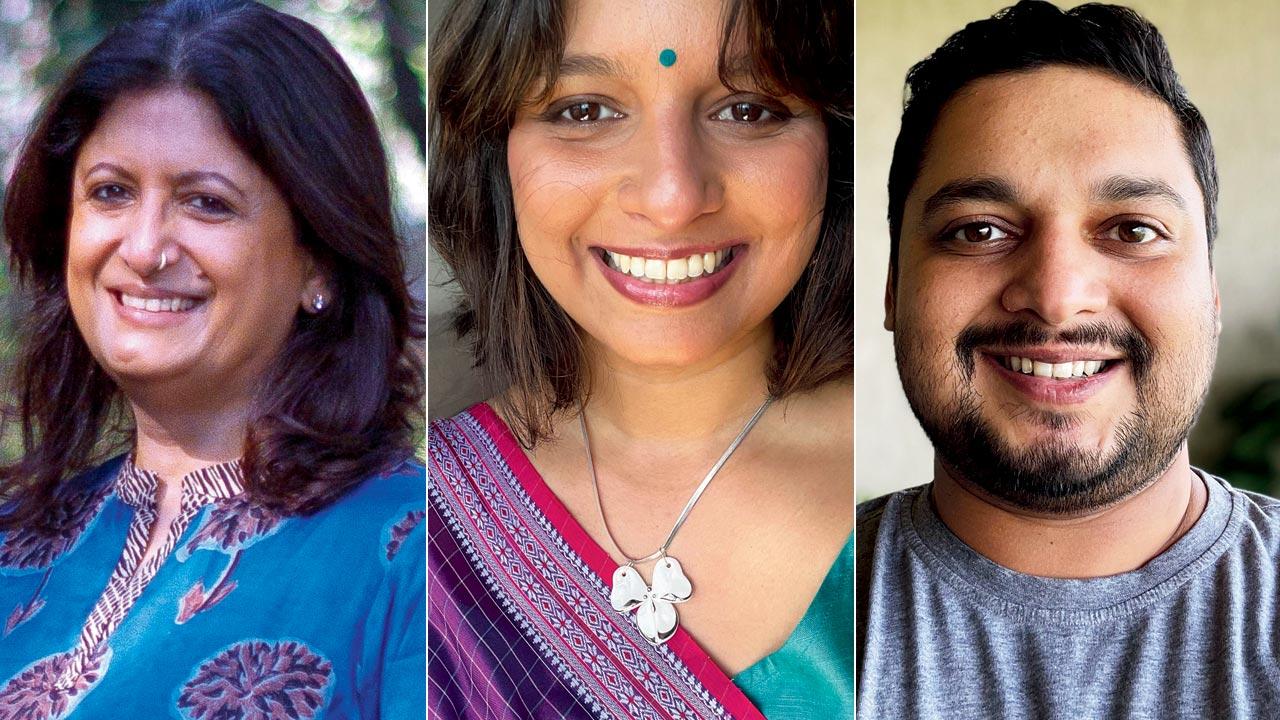A cluster of artists are working towards putting Konkan on the map by creating jewellery and home decor inspired by the region’s landscape

The Konkan flora and fauna have been used to design one-of-a-kind pieces
Growing up in Mumbai, Anuja and Varun Pitre spent their summers in the Konkan. The Pitres’ ancestral land housed a cosy bungalow near Devrukh in Ratnagiri district. Anuja talks fondly of her childhood, the nature trails she went on, the family home packed with almost 100 people at times, and her curiosity about Konkan’s biodiversity.
ADVERTISEMENT
The region’s landscape, lush endemic flora, and Devrukh’s love for art have all contributed to the launch of Ithé. Meaning ‘here’ in Marathi, Ithé offers hand-sculpted ceramic jewellery that draws from the endemic flora of the region. But why focus on the coast? “This area, according to us, is a bit under-represented in the lifestyle space. So we wanted to add to that storytelling,” says Anuja.
Ask them how Ithé came to be, and they credit their family’s legacy in Devrukh. The duo’s mother, Bharati Pitre, is a well-known papier-mâché sculpturist who now works out of her studio in Pune. Bharati says she draws inspiration from her surroundings any time she sits down to create. So naturally, some Konkan elements get into the mix. But Bharati’s ties with her habitat grew stronger when her father-in-law set up the Devrukh College of Art and Design (DeCAD), a college for fine arts affiliated with Mumbai University.
 At the moment, the launch collection features five endemic species of flowers. It features Konkan Dipcadi, Habé, Kilvar, Neelpushpi, and Surangi
At the moment, the launch collection features five endemic species of flowers. It features Konkan Dipcadi, Habé, Kilvar, Neelpushpi, and Surangi
Bharati was called in to offer design direction to the students whom she encouraged to look and create from their surroundings. “Besides growing rice and mangoes there was no other source of income for people in this belt. So people moved to cities,” she says. “That’s when my father-in-law thought of setting up a fine art college because there’s a lot of talent here. Almost every house runs a small cottage industry making Ganpati idols and their hand skills are fabulous. It’s in their DNA.”
To offer the younger generation a chance to stick around to make an income, a small studio was attached to the college campus for students to explore different artistic mediums. “Artists can come here to do their own work, or they can make products for us and be paid. We also are trying to employ as many women as we can, because that gives them a second income,” adds Bharati.
She first launched OleeMaatee in 2018 with the local artists, and by 2021, the Pitres turned it into a commercial home decor brand that offers clay products all made at the studio in Devrukh. Konkani artists create terracotta tableware and other home items for commercial use and cater largely to B2B clients. You will see collections inspired by the hues of the Sahayadri range, Konkan’s streets, food, and fruit, and even flora and fauna. Think paperweights and fridge magnets
portraying a sack of lasoon or kanda, a Kingfisher perched on a bowl, toothpick holders with Konkan berries, collectables of Konkani cottage homes, and more.
 Bharati Pitre, Anuja Pitre and Varun Pitre
Bharati Pitre, Anuja Pitre and Varun Pitre
The ethos of OleeMaatee, which Anuja and Varun contribute to, is carried forward at Ithé. Anuja works with porcelain and is turning her curiosity about flora
and fauna into earrings, necklaces, bracelets, and other adornments. At the moment, the launch collection features five endemic species of flowers—Dipcadi, Habé, Kilvar, Neelpushpi, and Surangi. Besides being found only in this belt, each flower has a backstory that’s more unique than the next. But why such a niche focus? “It felt like a good opportunity,” says Anuja. “There has been this trend to sort of flatten the perception of India because it has been easier for people outside to swallow that. Now we are celebrating micro-regions and I think the audience too is ready for a more complex narrative.”
Anuja adds that each piece is hand-sculpted, and not hand-crafted, because you can only mould each petal by hand. There’s a lot of attention to detail, and the Konkani artists in the Devrukh studio contribute towards this.
Beyond the regional narrative, the Pitres also ensure that local artists get their due.
“The other side of Ithé is to create sculptural art which can enable these artists to uplift themselves creatively and in terms of skill. Then they can command a far, far better remuneration for the work they do and be proud of what they do.
It is our sincere attempt to create a cluster of extremely skilled craftsmen in that locality,” concludes Varun.
 Subscribe today by clicking the link and stay updated with the latest news!" Click here!
Subscribe today by clicking the link and stay updated with the latest news!" Click here!







